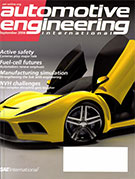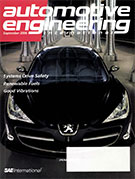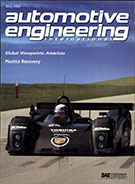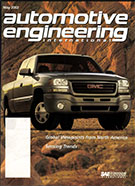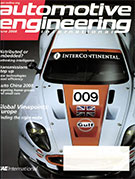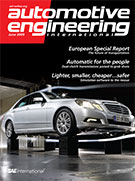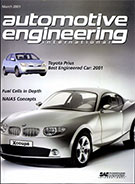Magazine
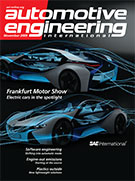
Automotive Engineering International 2009-11-01
2009-11-01
Software shifts into automatic mode Automatic code generation is speeding up development and helping to improve automotive system reliability. Coming out party Plastics abound inside vehicles, but they are increasingly finding new applications outside the cockpit thanks to a heavy push for lightweight solutions. Cutting emissions down to size While the long-term future may deliver an efficient alternative to the internal-combustion engine, a few UK-led projects are tackling short-to medium-term solutions for improving engine-out emissions and efficiency of gasoline and diesel engines.



